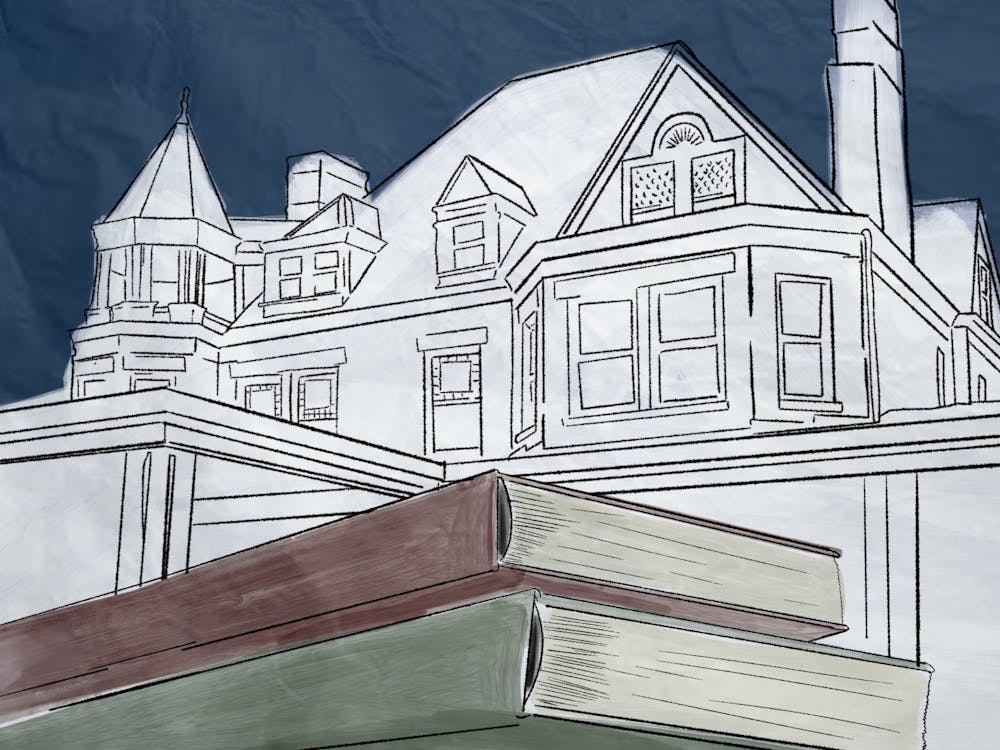The first print in the clockwise viewing pattern of the Fralin Museum of Art’s latest feature, “The Great War: Printmakers of World War I,” depicts the physical form of Death. A skeletal caricature adorned in a tattered cloak gazes down upon a gruesome scene: combat boots, sprouting with bits of bone which once connected to the legs of a fallen soldier.
The piece by English printmaker Percy John Smith, aptly titled “Death Awed,” does not fit within the loose chronological timeline of the overall exhibit. The collection glides over the general course of World War I, from its industrial preparations to its nihilistic aftermath. “Death Awed,” however, personifies the ugly heart of the conflict and, in turn, the collection. It reaffirms the former’s lasting and unique legacy of horror; that Death, a being as old as Earth itself, could actually show surprise, dismay or even pity, upon witnessing the cruelty of the human race.
“The Great War,” stylized as “THE GREAT WAR” and coordinated by the Virginia Museum of Fine Arts, is replete with selections pulled entirely from the Frank Raysor Collection. The exhibit features a variety of European and American artists, many of whom were direct eyewitnesses to combat.
Represented countries include England, Scotland, the United States, France, Belgium and the late Austria-Hungary. Noticeably absent from this list are both Russia and Germany, two nations which played major roles in the war and transformed significantly in its wake. Germany’s vacancy particularly dampens the showcase, largely because the country embodied the main opposition to Great Britain, France and the United States. Regardless, while said omissions definitely do not benefit the showcase, both the character of the exhibit as well as the prints themselves retain a level of superb quality.
Utilizing a minimalistic approach, the exhibit does not attempt to overcompensate for the largely subdued natures of the prints; rather, it complements them. The beige wall on which the works rest provides a satisfactory balance between complete monotony and striking distraction. Meanwhile, the relatively equidistant and lightly sparse spacing of the prints allows for a degree of breathability amidst the admittedly heavy subject matter. Ultimately, the high quality of the showcase renders other methods of viewership, such as browsing through the prints online, as diluted experiences.
The prints themselves encapsulate many different but related forms, such as engravings, lithographs, drypoints, etchings and even postcards. Most of the works are grayscale (black and white), with a few exceptions. This reinforces the funereal atmosphere reverberating from the prints, though it absolutely does not dull the impact of the overall presentation. Each individual work contains minute yet weighty details which lend themselves to deep and personalized analyses, all while keeping thematic solidarity with one another.
After embarking on a trip through the room, it is quite easy to complete the circle and return to “Death Awed.” This reinforces the exhibit’s almost impossible synthesis of grit and grace, two things which do not usually lend themselves to reconciliation. However, it is indeed the balance of these two extremes which creates a harrowingly tranquil vacuum, leaving only the fundamental concepts to which the content of the art may be conducive.
Potentially uneasy questions pertaining to said concepts also arise, questions which cannot simply be ignored. As a result, “The Great War” demands something of those who experience it, even if but for a moment: thought and, perhaps more importantly, reflection.




